Performing Community Part 2

Article by Avi Y. Decter, former JMM executive director, with Erin L. Titter, former JMM archivist. Originally published in Generations – 2003: Entertaining Maryland. To order a print copy of the magazine, see details here.
Part II: A Long History
Missed the beginning? Start here.
Community performances have a long history in Baltimore, both within the Jewish community and beyond. Documentation of these performances is, however, relatively thin. In the Jewish contact, we know of programs, events, and presentations dating back to at least the late 19th century, but photographic evidence discovered so far carries the story only from the 1910s to the present.
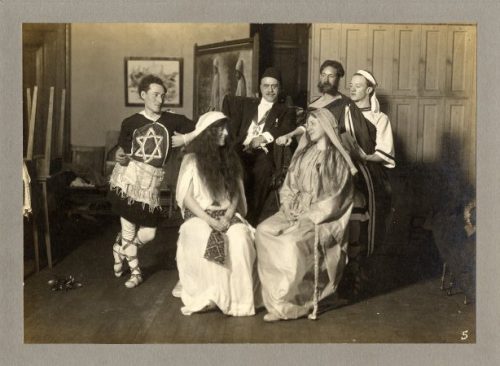
One of the earliest photos we have depicts a “Biblical Pageant” at the Maryland Institute around 1913, presumably a program organized by sculptor Ephraim Keyser, then a faculty member at the Institute. But the precise occasion, content, and audience remain obscure.
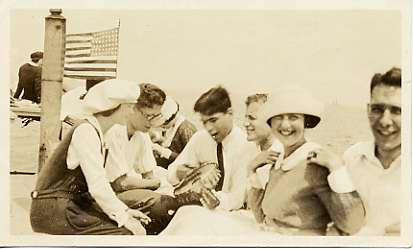
Jewish social clubs, such as the Clinton Club, organized by middle-class young men and women of German Jewish descent, are known to have produced a variety of entertainments including a burlesque on The Merchant of Venice. Lester Levy reports in an unpublished memoir that during the 1920s the Junior Assembly, an offshoot of the venerable Harmony Club, created a playlet on Mah Jongg, which at the time was enjoying a craze throughout the country. In this show, Reuben Oppenheimer wrote the lyrics to a number titled “The Only Possible Place”: “You go out to dine and you’re feeling fine/ your tux’s a perfect fit. You meet a friend and you gallantly bend/ and you feel a terrible split/ A rip, rip, rip, a devastating rip/ You’re in an awful case. As you grab for a char, you can feel the cold air/ In the only possible place!” This kind of self-spoofing, like nicknames, simultaneously amuses and reinforces group identity.[1]
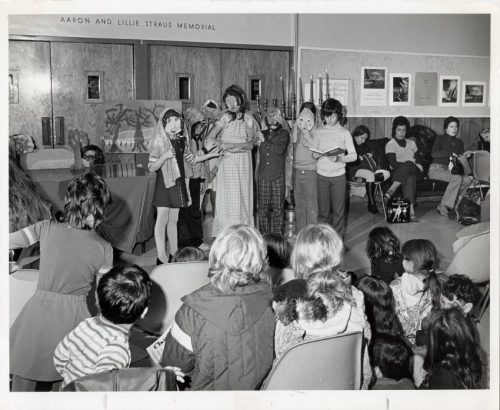
Inadvertent entertainment is a frequent by-product of a common form of community performance – the school play, which parents and grandparents typically attend with mixed feelings of anticipation and dread. School plays, like other community performances, run the gamut. Some are staged by students, others by teachers, parents, and other amateur volunteers, and still others by professional performers. Plays in Hebrew and those on traditional Jewish themes like the Purim story are usually direct (and often didactic) in delivering their moral messages about the virtues of being Jewish and leading a committed Jewish life. For many years, The Associated Players presented a puppet show for children about “the squirrel who would not share.” The theme of philanthropic giving was pronounced and obvious.[2]
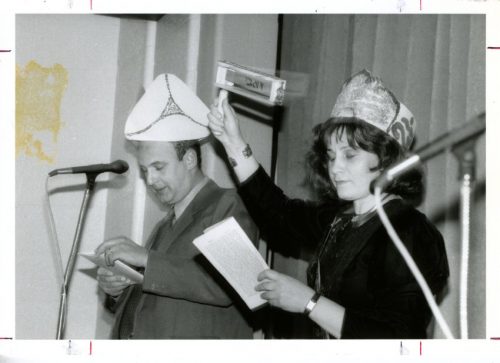

Other kinds of performance assert the importance and persistence of Jewish identity within pluralist, polyglot America. In the Bicentennial year 1976, for instance, the Jewish community was invited to present the essentials of “Jewish American” life at a festival staged at the Inner Harbor. The vehicle chosen for dramatizing the vitality of Maryland Jewish life was “Café Tel Aviv,” where performances of Israeli song and dance celebrated a primary theme of Jewish history and tradition – Zion as the Jewish homeland. In an earlier generation, performances in Yiddish by groups like the Yiddish Folk Theater served a similar function, maintaining continuity with Jewish culture in Europe.
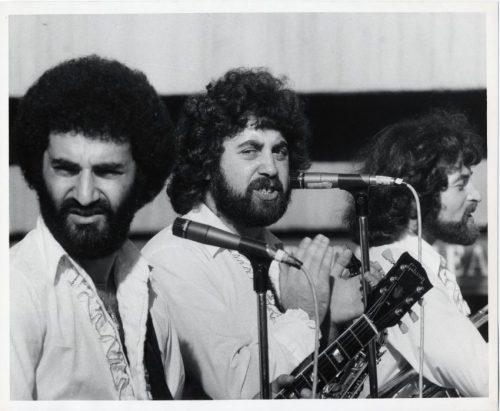
Within the Jewish community, particular organizations promote the interests of sub-groups, communities within the community, as it were. Congregations, for instance, promote their special position and group solidarity through various kinds of performance. Chizuk Amuno Congregation, long a leading Conservative synagogue in Baltimore, has sponsored numerous performances over the years. Beginning in 1931, the Chizuk Amuno Brotherhood presented an annual play at the Maryland Theatre. Most productions were community theater at its purest, with scripts by local amateurs. The 1933 production, in contract, featured a Broadway hit from 1930 (Mendel, Inc.), written by David Freedman, a writer for noted comedian Eddie Cantor.
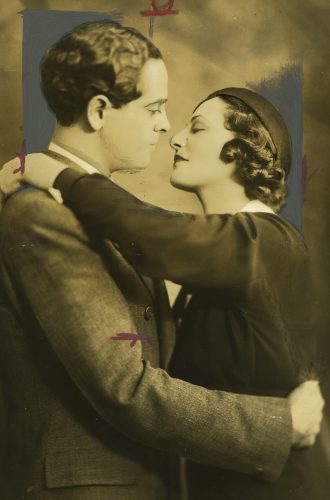
In 1971, on the occasion of the congregation’s 101st annual meeting, “The Chizuk Amuno Theatre” presented The Building Bug, a farce in one act. In this spoof of the congregation’s long history of dedicating a new synagogue every generation (1876, 1895, 1922, and 1958), Chizuk Amuno celebrated its own vitality and growth. One of several musical numbers went like this:
Contractor, contractor,
Build us a Shule
A Chapel that’s cool
A hip swimming pool
We want Beth Tfiloh and Beth El to drool
So build us a perfect shule![3]
On another occasion, Chizuk Amuno feted its long-time cantor, Adolph (Abba) Weisgal. A cast of middle-aged men who had studied for their Bar Mitzvah ceremonies with the cantor performed in a musical revue, replete with canes and lapel buttons announcing them as “Adolph’s Boys.” Entertainments such as these mobilized the congregation while boosting morale.
Continue to Part III: Popular Entertainment
[1] JMM MS 77 Lester Levy Family Papers, Lester Levy’s Memoirs, n.d., Box 6, Folder 213.
[2] Telephone interview with Carole Sibel, August 13, 2002.
[3] Lyrics for The Building Bug were based on the book by Stanley I. Minch and written by Ronald Israel, Stanley I. Minch, Jerry Cohen, and Gwen Cohen. Courtesy of the Chizuk Amuno Congregational Archives and Congregational Archivist Jan Schein.
